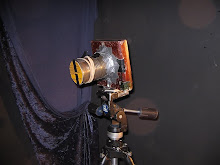"The dead have no remedy in law; all they can do is haunt you"
Hilary Mantel
"Monuments differ in different periods. Each age has its own."
Phillip Johnson
While Theodore Gericault may recline in elegant splendor, palette and brushes in hand, surmounting his memorial, surveying his neighbors in Pere Lachaise's cemetery, here in the Hudson Valley anonymity and stolid muteness marks many a memorial.
Theodore Gericault
Two squared off blocks of stone, their inscriptions mostly washed away by time and rain, stand together as plain-spoken monoliths, family memorials of kin long-vanished from our community.
Two Headstones, Stuyvesant
Others lean against themselves still displaying some local sculptor's vision of eternal grief in the bas-relief of urn and weeping willow. While Gericault has his 'Raft of the Medusa' as memorial to both his art and their lost lives, these simpler forms mark lives ended in the 1820's and 1830's - at about the same time that he died.
In the Butler Cemetery, Stuyvesant Landing
And some lost cemeteries have all but returned to forest, their Civil War veterans' status noted by Grand Army of the Republic markers, but more often covered by the cast off leaves of the encroaching trees.
Abandoned cemetery in the woods
















































